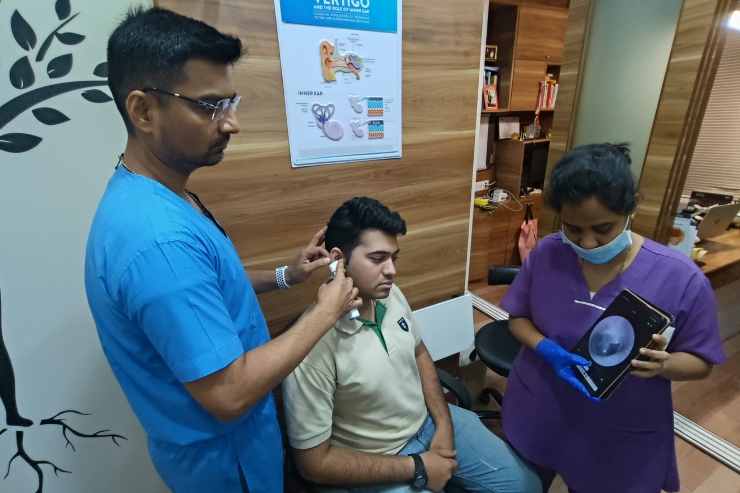
Understanding Otoendoscopy: A Modern Approach to Ear Examination
Otoendoscopy is a modern and minimally invasive diagnostic procedure used to examine the ear canal and eardrum (tympanic membrane) in great detail. Unlike traditional methods that rely on handheld otoscopes, otoendoscopy uses a specialized endoscope—typically a rigid Hopkins rod endoscope—connected to a camera system. This allows for a magnified, high-resolution view of the inner ear structures, offering clarity and accuracy in diagnosis. The wide-angle view helps detect subtle abnormalities that may not be visible with standard examination tools.
This procedure is particularly useful for identifying various ear conditions such as ear infections, tympanic membrane perforations, wax impaction, foreign bodies, and signs of chronic ear disease. Otoendoscopy is also valuable in pre- and post-surgical evaluations, allowing both the patient and clinician to visualize the problem area and monitor recovery. As it is a visual tool, it aids in educating patients by showing real-time images of the ear, which can be reassuring and informative.
Otoendoscopy is a quick, safe, and generally well-tolerated procedure. It is usually performed in an outpatient setting and does not require any special preparation or anesthesia. The use of advanced optics reduces discomfort, making it suitable for both adults and children. In some cases, it can also be used to guide minor procedures, such as wax removal or foreign body extraction. Overall, otoendoscopy represents a significant advancement in ENT diagnostics, offering a clearer, more detailed understanding of ear health and aiding in timely, accurate treatment.
Services
For enquiries
Schedule your consultation today and start your journey to better health!
